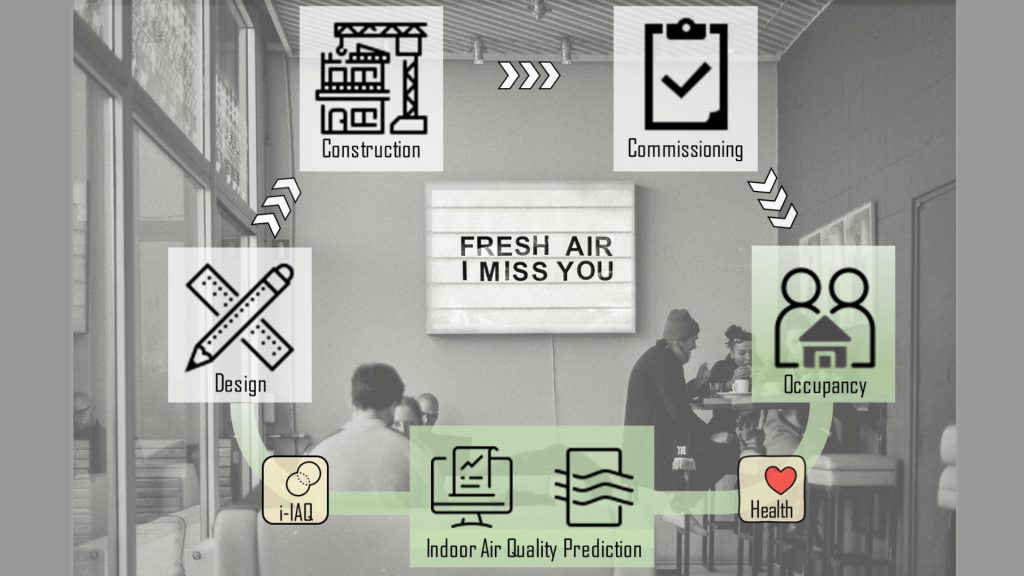
Summary
Healthy building design is an emerging need in the field of architecture and building engineering. Indoor Air Quality (IAQ) is an inevitable factor that should be considered for healthy building design due to the link with human health and productivity. Current integration of IAQ into healthy building design, however, is disappointedly scarce, whereas the traditional IAQ control strategies are still largely followed: IAQ management steps in AFTER a building is constructed and occupied. The absence of involvement of IAQ in building design stage leads to not only harmful health and productivity outcomes, but also elevated costs of post-intervention.
The idea of this project is to integrate IAQ prediction into healthy building design — IAQ is governed by fundamental mass transfer and material balance laws, which enables accurate simulation of IAQ. Based on the quantitative prediction, designers can modify the design accordingly to achieve their IAQ goals, so that potential IAQ issues can be resolved at the very beginning (design) stage with the lowest costs.
This project aims to develop a simulation toolbox (i-IAQ) to predict post-occupancy IAQ at building design stage. The project outcomes have the potential to pave a way towards novel and cost-effective IAQ control, and more holistic healthy building design. Architects, building engineers, and BIM software and consultant companies can utilize the toolbox to meet the growing demands of healthy building design, to adopt the trend of healthy habitats, and even to lead a trend of quantitative design of healthy buildings.
General information
- PI: Shen Yang(HOBEL / IIC)
- Start date: 01.09.2021
- Duration: 6 months